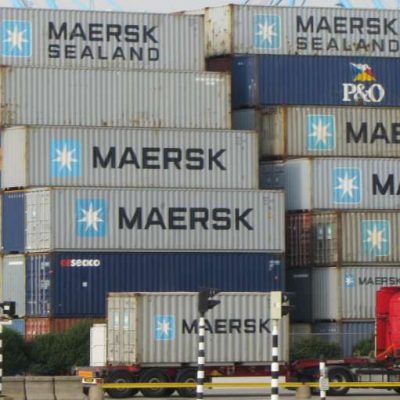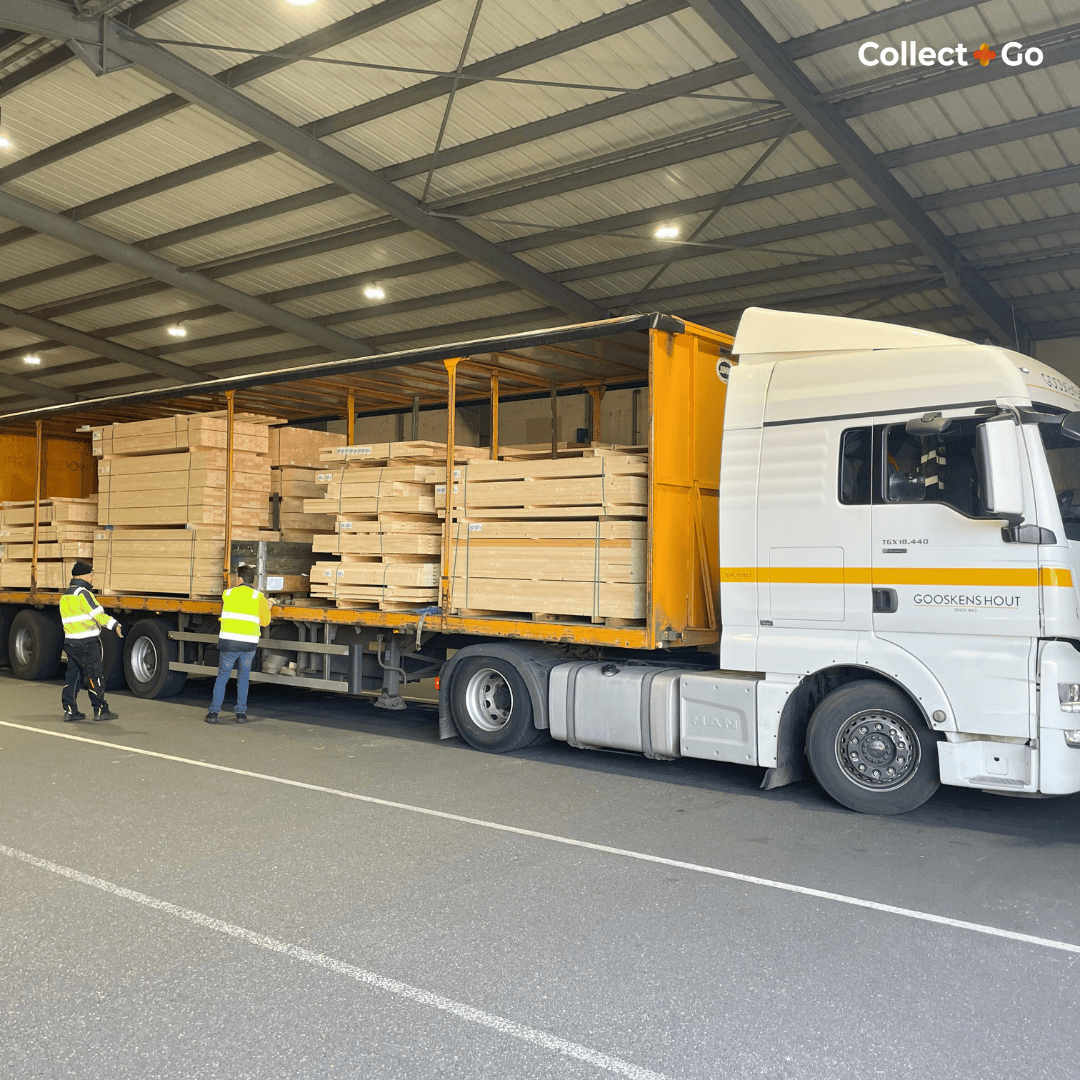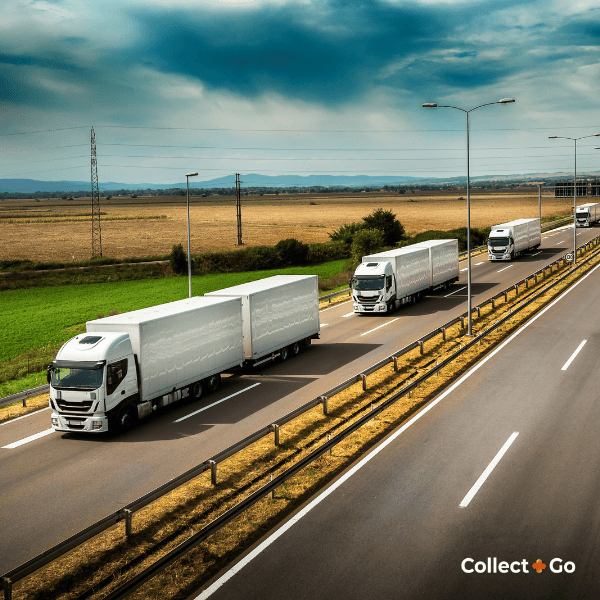For cross-border transport of containers, it is required to carry a consignment not or CMR waybill. This consignment note must be present at all times with the shipment. During transport, this document can be transferred, checked or edited at various times (see picture below).
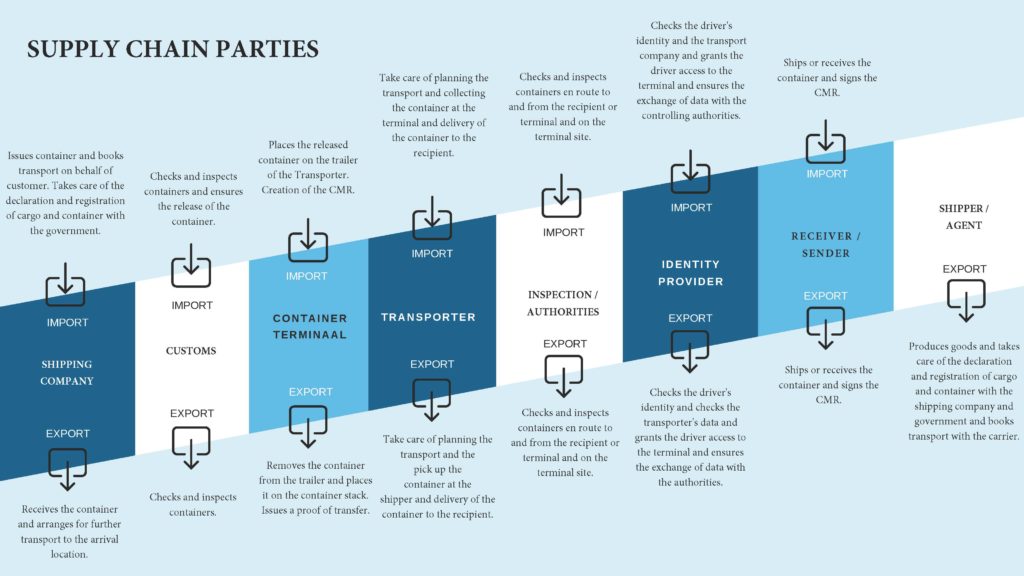
For a number of years it has been possible to replace the paper version with e-CMR, the digital equivalent of the CMR. The Benelux authorities have certified various parties to digitize the waybill process. These parties thus comply with all legal requirements as set out in the e-CMR protocol. e-CMR can now be used in 31 countries. Since the use of e-CMR will also be permitted in Germany from April 2022, the map for e-CMR is almost completely green in Europe.
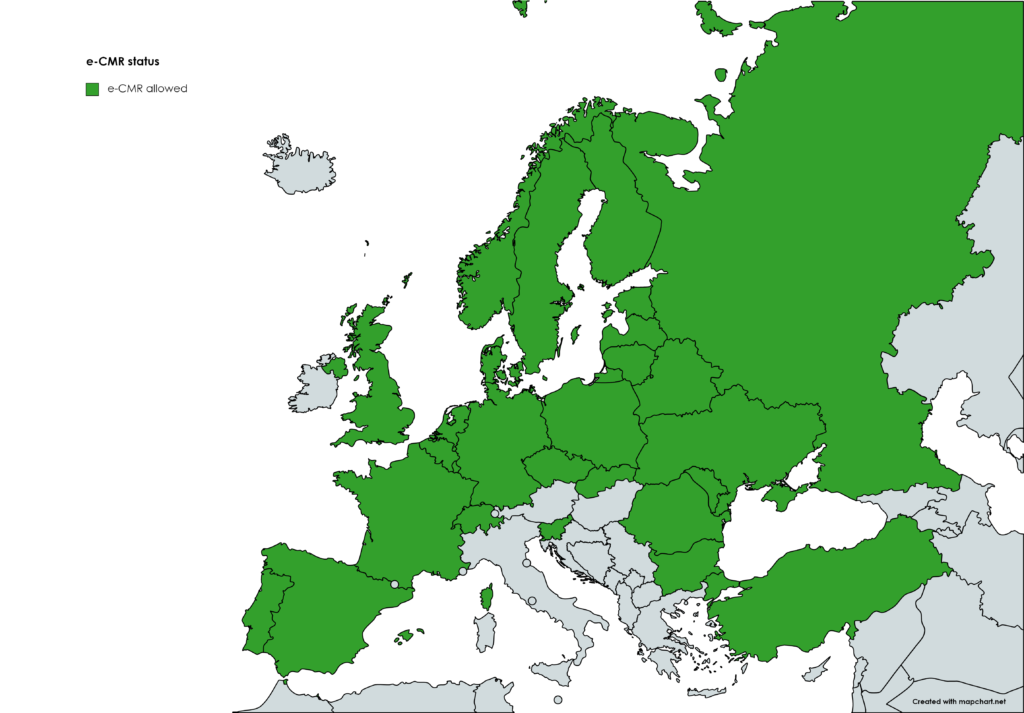
Output
The e-CMR has now been put into use in a number of places. As a result, concrete and measurable results are available, including – but not limited to – the following:
Reduction of transaction costs
Thousands of lorries pick up and return containers at the terminals every day. It is estimated that the total transaction costs of the paper CMR are on average € 4.50 per transaction. By applying the E-CMR, these transaction costs within the chain are reduced by 90%. Transporters, terminals and shipping companies see returns increase due to faster transaction processing.
Availability of information
The transport sector is attractive for serious crime such as human and drug smuggling or theft of valuable goods. Digital availability of information ensures that the government’s insight into the logistics process is increased. The benefits of this include:
- Limiting damage through early identification of various forms of fraud
- Exception check is possible
- The control process can partly take place outside the terminal
Next step
Thanks to the digitization of the consignment note, there are opportunities for further innovation to improve the logistics process. Partnerships can solve specific challenges, such as data distribution in the chain. Instead of making all information available to all parties involved, it offers opportunities to share relevant information in a fully targeted manner. This benefits efficiency but above all safety.
Pin codes with which containers are released are known in many places in the chain. Smart solutions between information systems can make this a lot safer. Think of a link between the driver card from the on-board computer, the aforementioned system and the access management system, whereby the driver does not have to enter the pin code, but can pick up ‘his’ container through biometric verification.
Would you like to know more about the advantages and possibilities of the e-CMR in combination with biometric verification? Please fill out the contact form below.
[wpforms id=”10875″]

